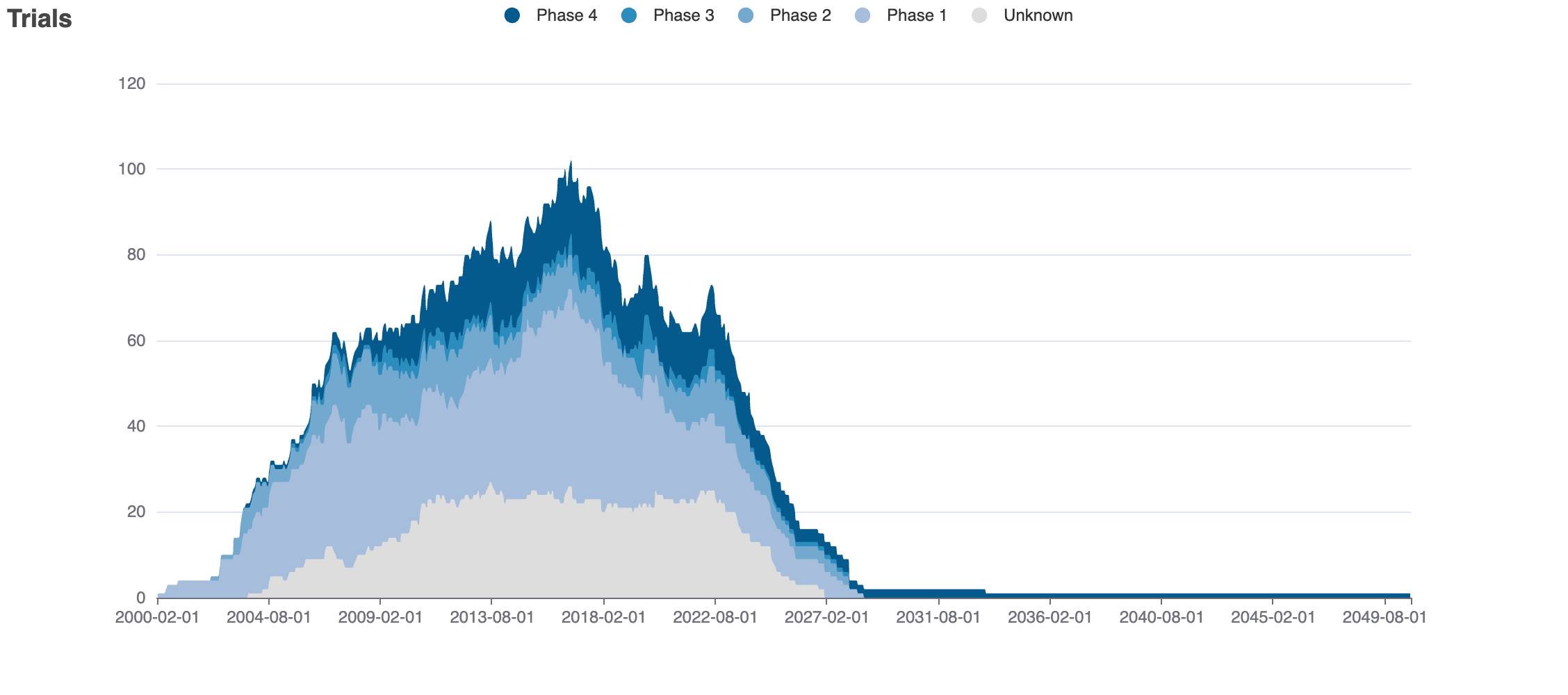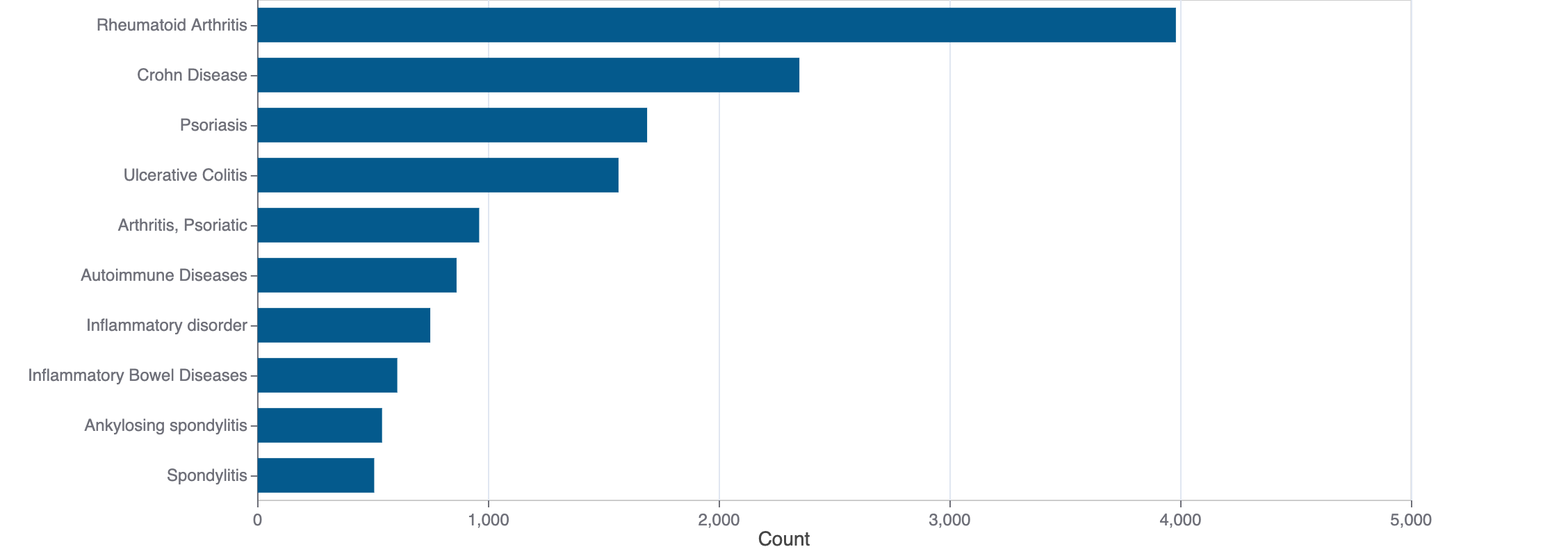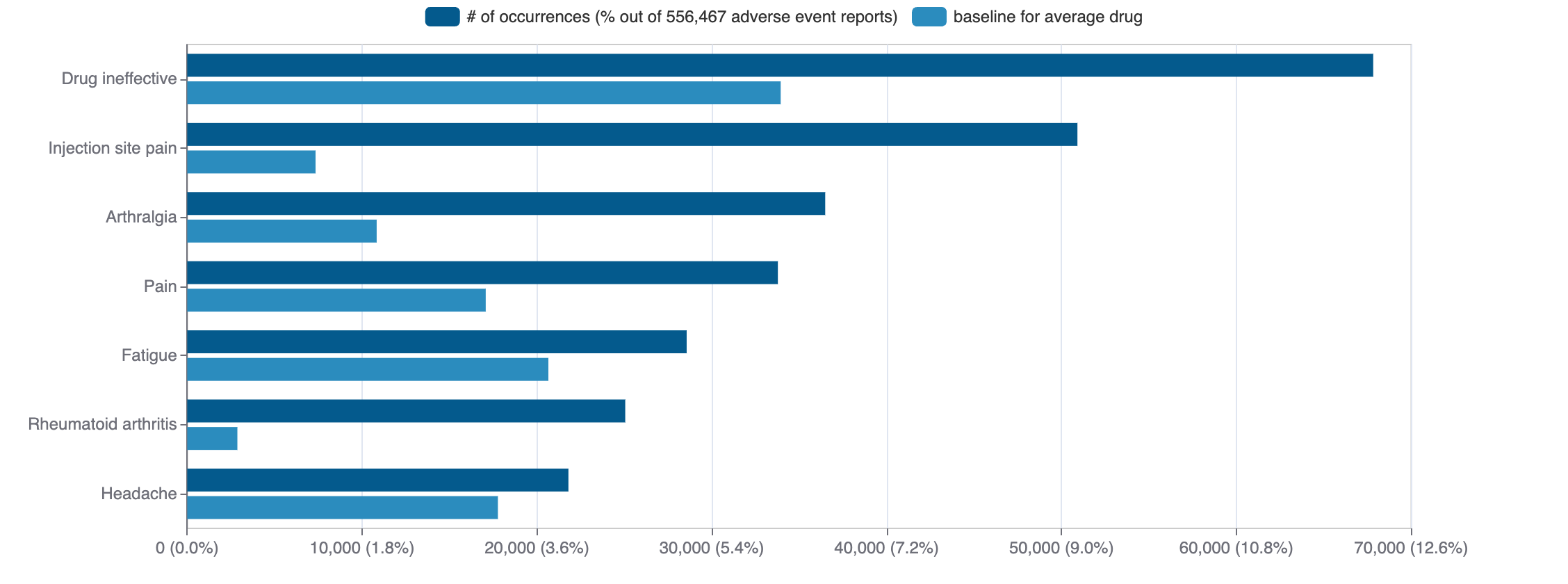Glyburide
Diabeta, Glucovance, Glynase (glyburide) is a small molecule pharmaceutical. Glyburide was first approved as Micronase on 1984-05-01. It is used to treat type 2 diabetes mellitus in the USA. The pharmaceutical is active against ATP-sensitive inward rectifier potassium channel 11. In addition, it is known to target cystic fibrosis transmembrane conductance regulator, ATP-sensitive inward rectifier potassium channel 8, solute carrier organic anion transporter family member 2B1, and aldo-keto reductase family 1 member C1.
Download report
Favorite
Commercial
Trade Name
FDA
EMA
Diabeta, Glynase (generic drugs available since 1995-08-29, discontinued: Micronase)
Drug Products
FDA
EMA
New Drug Application (NDA)
New Drug Application (NDA)
Abbreviated New Drug Application (ANDA)
Abbreviated New Drug Application (ANDA)
Glyburide
Glyburide
+
Metformin hydrochloride
Tradename | Company | Number | Date | Products |
|---|---|---|---|---|
| GLUCOVANCE | Bristol Myers Squibb | N-021178 DISCN | 2000-07-31 | 3 products, RLD |
Hide discontinued
Labels
FDA
EMA
Brand Name | Status | Last Update |
|---|---|---|
| glucovance | New Drug Application | 2012-04-23 |
| glyburide | ANDA | 2023-06-20 |
| glynase | New Drug Application | 2017-10-07 |
Indications
FDA
EMA
Indication | Ontology | MeSH | ICD-10 |
|---|---|---|---|
| type 2 diabetes mellitus | EFO_0001360 | D003924 | E11 |
Agency Specific
FDA
EMA
No data
Patent Expiration
No data
HCPCS
No data
Clinical
Clinical Trials
92 clinical trials
View more details

Mock data
Subscribe for the real data
Subscribe for the real data
Indications Phases 4
Indication | MeSH | Ontology | ICD-10 | Ph 1 | Ph 2 | Ph 3 | Ph 4 | Other | Total |
|---|---|---|---|---|---|---|---|---|---|
| Type 2 diabetes mellitus | D003924 | EFO_0001360 | E11 | 3 | 3 | 8 | 11 | 6 | 31 |
| Gestational diabetes | D016640 | HP_0009800 | O24.4 | 2 | 1 | 2 | 6 | 3 | 13 |
| Diabetes mellitus | D003920 | EFO_0000400 | E08-E13 | — | 1 | 5 | 2 | 2 | 10 |
| Type 1 diabetes mellitus | D003922 | EFO_0001359 | E10 | — | 1 | 1 | 1 | 1 | 3 |
| Hypertension | D006973 | EFO_0000537 | I10 | — | — | — | 2 | — | 2 |
| Vascular stiffness | D059289 | — | — | — | 1 | 1 | 2 | ||
| Subarachnoid hemorrhage | D013345 | EFO_0000713 | I60 | — | — | — | 2 | — | 2 |
| Obesity | D009765 | EFO_0001073 | E66.9 | — | — | — | 1 | — | 1 |
| Blood pressure | D001794 | EFO_0004325 | — | — | — | 1 | — | 1 | |
| Cardiomegaly | D006332 | EFO_0002503 | I51.7 | — | — | — | 1 | — | 1 |
Show 4 more
Indications Phases 3
Indication | MeSH | Ontology | ICD-10 | Ph 1 | Ph 2 | Ph 3 | Ph 4 | Other | Total |
|---|---|---|---|---|---|---|---|---|---|
| Pregnancy | D011247 | EFO_0002950 | Z33.1 | — | — | 2 | — | 1 | 3 |
| Stroke | D020521 | EFO_0000712 | I63.9 | 1 | 1 | 1 | — | — | 2 |
Indications Phases 2
Indication | MeSH | Ontology | ICD-10 | Ph 1 | Ph 2 | Ph 3 | Ph 4 | Other | Total |
|---|---|---|---|---|---|---|---|---|---|
| Traumatic brain injuries | D000070642 | S06 | 2 | 2 | — | — | — | 3 | |
| Ischemic stroke | D000083242 | 1 | 2 | — | — | — | 2 | ||
| Brain neoplasms | D001932 | EFO_0003833 | C71 | 1 | 1 | — | — | — | 1 |
| Brain edema | D001929 | EFO_1000845 | G93.6 | 1 | 1 | — | — | — | 1 |
| Drug-related side effects and adverse reactions | D064420 | T88.7 | — | 1 | — | — | — | 1 | |
| Transient neonatal hyperglycinemia | C562672 | — | 1 | — | — | — | 1 |
Indications Phases 1
Indication | MeSH | Ontology | ICD-10 | Ph 1 | Ph 2 | Ph 3 | Ph 4 | Other | Total |
|---|---|---|---|---|---|---|---|---|---|
| Healthy volunteers/patients | — | 12 | — | — | — | 1 | 13 | ||
| Angina pectoris | D000787 | EFO_0003913 | I20 | 1 | — | — | — | — | 1 |
Indications Without Phase
Indication | MeSH | Ontology | ICD-10 | Ph 1 | Ph 2 | Ph 3 | Ph 4 | Other | Total |
|---|---|---|---|---|---|---|---|---|---|
| Headache | D006261 | HP_0002315 | R51 | — | — | — | — | 2 | 2 |
| Cerebrovascular circulation | D002560 | — | — | — | — | 1 | 1 | ||
| Cerebral hemorrhage | D002543 | — | — | — | — | 1 | 1 | ||
| Reperfusion injury | D015427 | — | — | — | — | 1 | 1 | ||
| Migraine disorders | D008881 | EFO_0003821 | G43 | — | — | — | — | 1 | 1 |
| Pain | D010146 | EFO_0003843 | R52 | — | — | — | — | 1 | 1 |
Epidemiology
Epidemiological information for investigational and approved indications
View more details
Drug
General
| Drug common name | GLYBURIDE |
| INN | glibenclamide |
| Description | Glyburide is an N-sulfonylurea that is acetohexamide in which the acetyl group is replaced by a 2-(5-chloro-2-methoxybenzamido)ethyl group. It has a role as a hypoglycemic agent, an anti-arrhythmia drug, an EC 2.7.1.33 (pantothenate kinase) inhibitor and an EC 3.6.3.49 (channel-conductance-controlling ATPase) inhibitor. It is a N-sulfonylurea and a member of monochlorobenzenes. |
| Classification | Small molecule |
| Drug class | — |
| Image (chem structure or protein) | |
| Structure (InChI/SMILES or Protein Sequence) | COc1ccc(Cl)cc1C(=O)NCCc1ccc(S(=O)(=O)NC(=O)NC2CCCCC2)cc1 |
Target
Agency Approved
KCNJ11
KCNJ11
Organism
Homo sapiens
Gene name
KCNJ11
Gene synonyms
NCBI Gene ID
Protein name
ATP-sensitive inward rectifier potassium channel 11
Protein synonyms
beta-cell inward rectifier subunit, IKATP, Inward rectifier K(+) channel Kir6.2, inwardly rectifing potassium channel subfamily J member 11, inwardly rectifying potassium channel KIR6.2, inwardly-rectifying potassium channel subfamily J member 11, potassium channel inwardly rectifing subfamily J member 11, Potassium channel, inwardly rectifying subfamily J member 11, potassium voltage-gated channel subfamily J member 11
Uniprot ID
Mouse ortholog
Kcnj11 (16514)
ATP-sensitive inward rectifier potassium channel 11 (Q9QX21)
Alternate
CFTR
CFTR
KCNJ8
KCNJ8
SLCO2B1
SLCO2B1
AKR1C1
AKR1C1
Organism
Homo sapiens
Gene name
CFTR
Gene synonyms
ABCC7
NCBI Gene ID
Protein name
cystic fibrosis transmembrane conductance regulator
Protein synonyms
ATP-binding cassette sub-family C member 7, cAMP-dependent chloride channel, Channel conductance-controlling ATPase, cystic fibrosis transmembrane conductance regulating, cystic fibrosis transmembrane conductance regulator (ATP-binding cassette sub-family C, member 7)
Uniprot ID
Mouse ortholog
Cftr (12638)
cystic fibrosis transmembrane conductance regulator (Q9JKQ6)
Variants
Clinical Variant
No data
Financial
No data
Trends
PubMed Central
Top Terms for Disease or Syndrome:

Mock data
Subscribe for the real data
Subscribe for the real data
Additional graphs summarizing 16,744 documents
View more details
Safety
Black-box Warning
No Black-box warning
Adverse Events
Top Adverse Reactions

Mock data
Subscribe for the real data
Subscribe for the real data
425 adverse events reported
View more details
Premium feature
Learn more about premium features at pharmakb.com
Learn more
